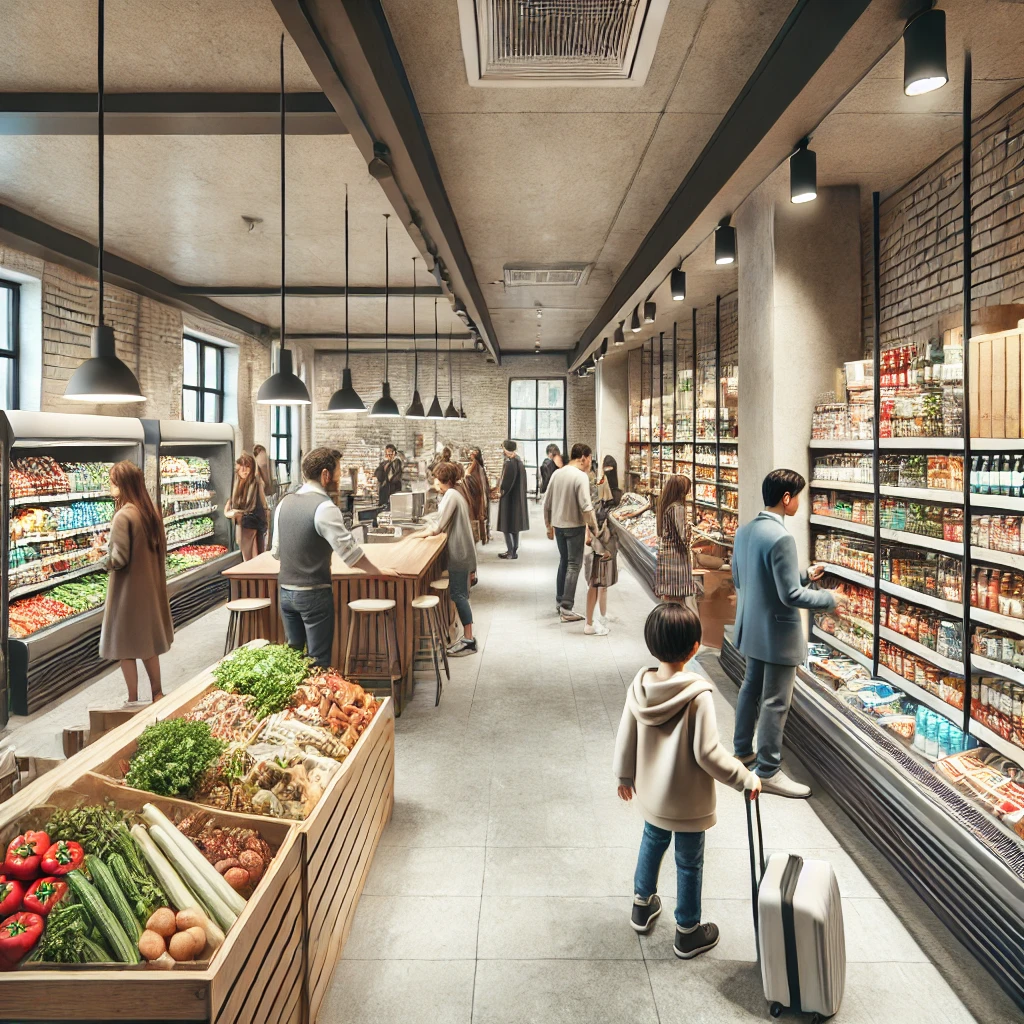The Future of Retail Isn’t Just Online—It’s Local, Accessible, and Small-Format
In the world of retail, one truth is clear: small-format stores are not a trend; they are the future. While e-commerce undoubtedly reshaped consumer expectations, the next evolution in retail will hinge on proximity, flexibility, and community-focused spaces. As urban centers become more densely populated and consumer behaviors shift, we’re witnessing a decisive pivot toward small-format stores that serve diverse, immediate needs.
1. Why Small-Format is the Solution for Tomorrow’s Urban Consumer
High-density areas in Canada, especially cities like Toronto, Vancouver, and Montreal, are seeing rapid demographic changes. Urban populations are younger, with more immigrants and single-family households. In these environments, sprawling big-box stores lose appeal. Today’s urban consumer doesn’t want to drive—they want essentials at their doorstep. Small-format stores, like 7-Eleven’s “New Standard” food-forward concept, Dollarama’s expanded grocery sections, and Rabba’s neighborhood stores, are meeting this demand head-on.

2. Empowering Accessibility Across Income Levels
Small-format stores cater to diverse income brackets, from families managing tight budgets to middle-income households stretched by rising living costs. For low- to mid-income Canadians, especially those without cars, Dollarama and 7-Eleven offer essentials that are nearby, affordable, and adapted to urban life. They aren’t just providing convenience; they’re empowering households to sustain their quality of life.
3. Leaders of the Small-Format Revolution
Companies that are seizing this shift are setting the pace for retail’s next chapter:
7-Eleven: By 2027, the chain aims to open 500 “New Standard” stores across North America, featuring fresh, ready-to-eat meals and local grocery essentials. The chain has found that these stores outperform traditional formats, with same-store sales up 13% in the first year. This model exemplifies a flexible, customer-centric approach that’s becoming vital in dense urban markets (Retail TouchPoints, 7-Eleven).
Dollarama and Giant Tiger: By enhancing their grocery offerings, these stores provide budget-friendly essentials for a broad audience. They are capitalizing on a market gap for low-cost, quality items within walking distance, and establishing themselves as neighborhood essentials.
Loblaw’s CityMarket and Adonis Stores: With a focus on fresh produce and accessible locations, Loblaw is positioning itself as the go-to for urban Canadians who prioritize quality but need proximity.
4. A Redefined Retail Experience: Convenience, Freshness, and Community
This shift to small-format is not about minimizing offerings; it’s about optimizing for the local consumer. These stores are compact, accessible, and offer fresh, ready-to-eat food and household staples that are fundamental in urban life. This isn’t just a convenience solution; it’s a strategic shift to redefine retail around community needs.
5. Conclusion: Small-Format Stores are the Future of Urban Retail
While e-commerce will always play a role in modern retail, small-format stores are here to dominate the urban landscape. They are the natural evolution, merging convenience with community integration in a way that big-box stores and online platforms cannot. In Canada’s cities, the future of retail is already taking shape on our corners and in our neighborhoods. As more retailers realize the potential of small-format models, they will drive transformation, setting a new standard for retail worldwide.
Interested in discussing strategies for adapting your strategy to changing markets? Let’s connect on LinkedIn and explore how we can drive business transformation together. Looking for more insights? Visit my Publications page for articles and case studies on strategic growth and operational excellence.

